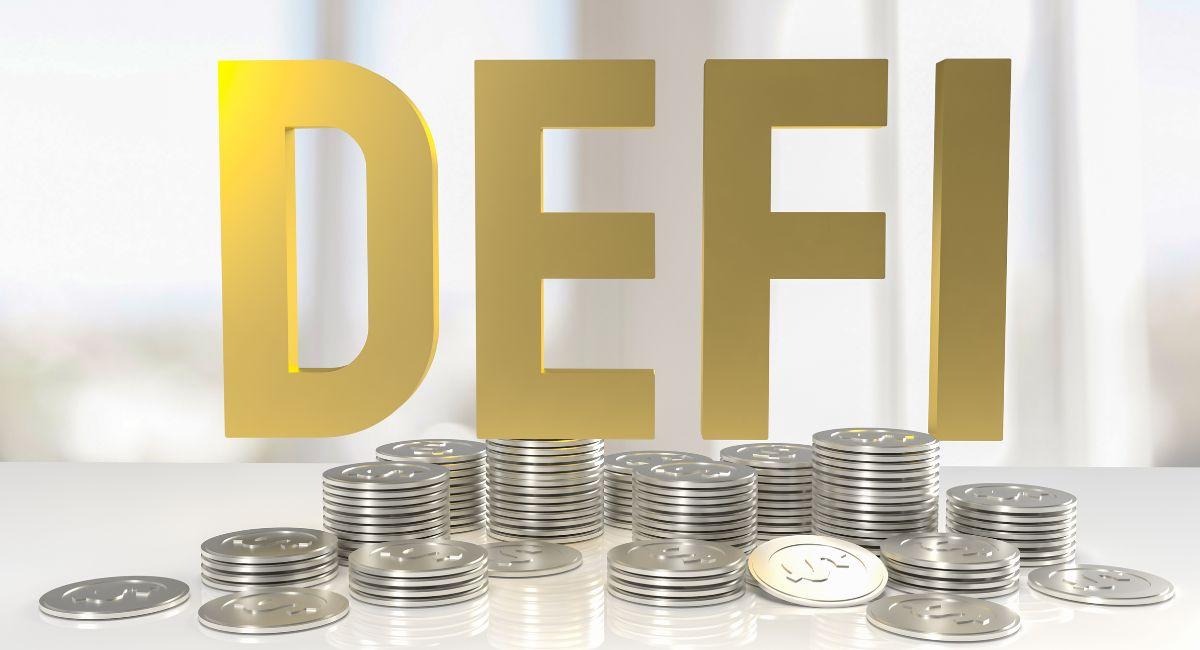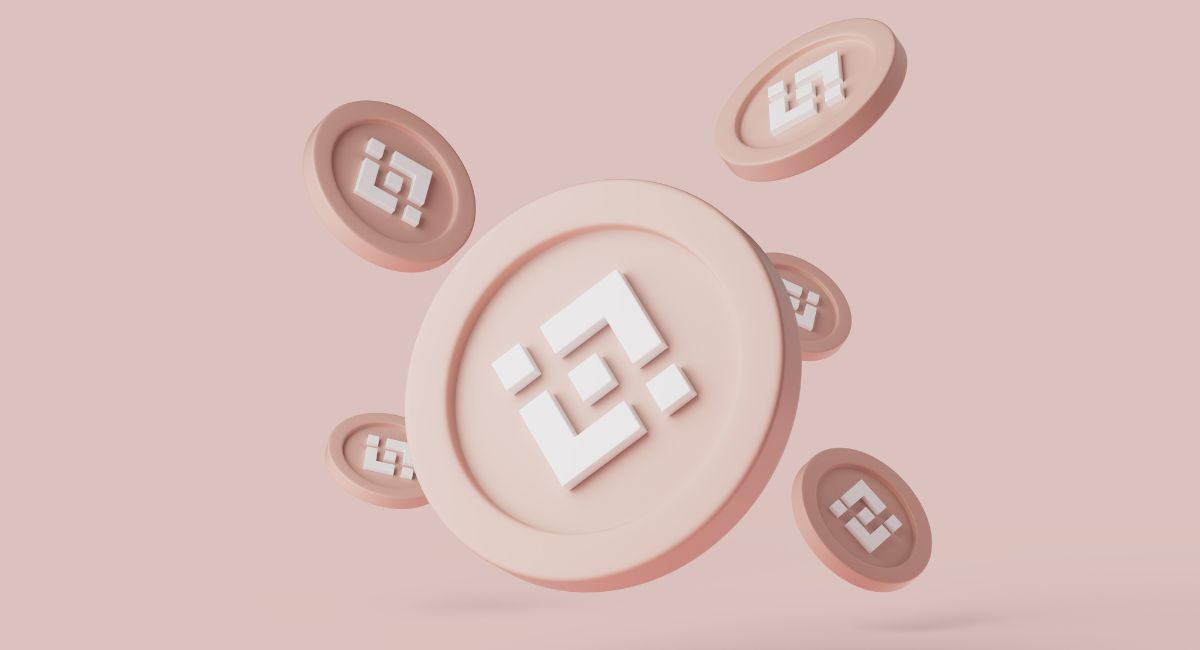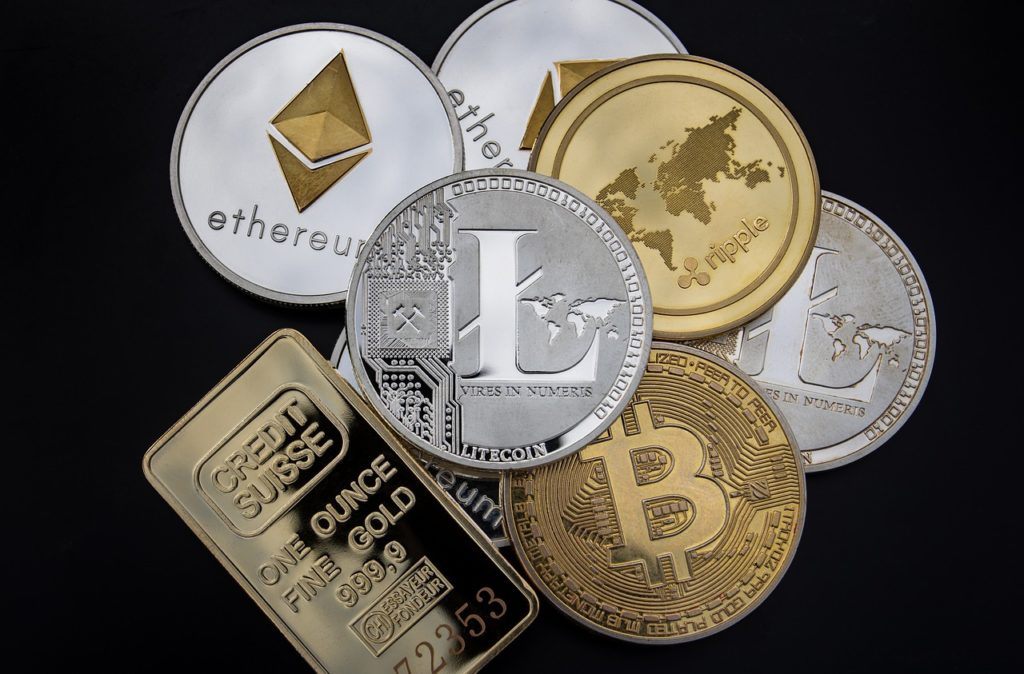Top 10 Ways To Navigating The Dichotomy Of Risk Management In DeFi Between Regulatory Control and Market Dynamics
Risk management in DeFi is crucial due to the inherent complexities and potential pitfalls compared to traditional finance. Unlike traditional systems with intermediaries and regulations, DeFi operates on a peer-to-peer basis, placing the onus of risk management on individual users and protocol developers.
Here’s a breakdown of key aspects of DeFi risk management:
Understanding DeFi Risks:
- Smart Contract Risk: DeFi protocols rely on smart contracts, self-executing code on the blockchain. Errors or vulnerabilities in these contracts can lead to exploits, hacks, and loss of funds.
- Oracle Risk: DeFi protocols often rely on oracles to feed external data into the system. Faulty or manipulated data from oracles can lead to inaccurate calculations and unintended consequences.
- Liquidity Risk: Unlike traditional markets, DeFi protocols might have limited liquidity, making it difficult to quickly enter or exit positions, potentially leading to significant price swings and slippage.
- Impermanent Loss Risk: When providing liquidity to DeFi pools, users expose themselves to impermanent loss, where the price ratio between deposited assets changes, potentially leading to lower returns compared to holding the assets individually.
- Governance Risk: DeFi protocols are often governed by communities, and decisions made through the governance process can impact the protocol’s future and potentially lead to unexpected outcomes.
Risk Management Strategies:
- Conducting Thorough Due Diligence: Before interacting with any DeFi protocol, it’s crucial to thoroughly research its code, security audits, and community reputation. Understanding the potential risks involved is essential for informed decision-making.
- Diversifying Across Protocols and Assets: Spreading investments across various DeFi protocols and asset classes can help mitigate the impact of any single protocol experiencing issues.
- Monitoring Positions Regularly: Actively monitoring the performance of DeFi investments and staying updated on protocol developments are crucial to identify and react to potential risks promptly.
- Utilizing Risk Management Tools: Several DeFi platforms and tools are emerging to help users manage risks. These can include portfolio tracking dashboards, risk assessment metrics, and insurance solutions tailored to DeFi.
Additional Considerations:
- Understanding Your Risk Tolerance: Assigning a risk tolerance level to your DeFi portfolio is essential. This involves determining the level of potential losses you are comfortable with and aligning your investment strategies accordingly.
- Staying Informed: The DeFi landscape is constantly evolving, and staying updated with the latest developments and potential security vulnerabilities is crucial for effective risk management.
By implementing these strategies and staying informed, you can potentially improve the risk management in DeFi and make more informed investment decisions within this dynamic and evolving space. Remember, DeFi involves inherent risks, and it’s essential to approach your investments with caution, conduct your own research, and never invest more than you can afford to lose.
Little bit about DeFi
Decentralized Finance (DeFi) refers to a burgeoning ecosystem of financial applications and protocols built on blockchain technology, aiming to democratize access to traditional financial services in a decentralized manner. Unlike traditional finance, which relies on intermediaries such as banks and financial institutions, DeFi operates on public blockchain networks, enabling peer-to-peer transactions and automated smart contracts without the need for intermediaries, hence risk management in DeFi is very important.
Key components of the DeFi ecosystem include decentralized exchanges (DEXs), lending and borrowing platforms, liquidity pools, asset management protocols, and synthetic asset platforms. These decentralized applications (DApps) allow users to trade, lend, borrow, and earn interest on digital assets directly from their wallets, bypassing traditional financial gatekeepers and enabling financial inclusion for individuals worldwide.
It offers several potential benefits, including enhanced financial transparency, lower costs, greater accessibility, and increased interoperability between different blockchain platforms. By removing intermediaries and central points of control, DeFi aims to democratize finance, empower users, and reduce systemic risks associated with centralized financial systems.
However, DeFi also presents challenges and risks, including smart contract vulnerabilities, regulatory uncertainties, market volatility, and scalability limitations. Security breaches, hacks, and exploits have exposed weaknesses in DeFi protocols, highlighting the importance of robust security measures, audits, and risk management strategies.
Despite these challenges, the ecosystem continues to grow rapidly, with increasing adoption, innovation, and investment from both retail and institutional players. As the space matures, addressing these challenges will be crucial to realizing its full potential in revolutionizing the global financial landscape and creating a more inclusive, efficient, and resilient financial system built on the principles of decentralization and peer-to-peer collaboration.
Also, read- Top 10 Amzing Use Cases Of Crypto In The World Of NFT, Defi And Metaverse
Importance of DeFi

- Financial Inclusion: It removes barriers to entry in traditional finance. Anyone with an internet connection can access DeFi applications, potentially bringing financial services to the unbanked or underbanked populations.
- Transparency and Security: It transactions are recorded on a blockchain, providing a public and immutable record. This reduces the risk of fraud and increases transparency compared to traditional financial systems.
- Reduced Costs: It cuts out intermediaries like banks, potentially leading to lower fees and interest rates on loans and other financial products.
- Programmability: It utilizes smart contracts, self-executing code that automates financial agreements. This can streamline processes and reduce human error.
- Innovation: It fosters a space for continuous development of new financial products and services not limited by traditional institutions.
- Accessibility: It allows for 24/7 global access to financial markets, breaking down geographical barriers.
- Openness: It protocols are often open-source, allowing anyone to inspect and contribute to their development, fostering a collaborative environment.
- Efficiency: It can potentially automate many financial tasks, speeding up transactions and settlements compared to traditional systems.
- Censorship Resistance: It operates on decentralized networks, making it resistant to censorship or control by any single entity.
- Financial Sovereignty: It gives users more control over their own finances, allowing them to manage their assets without relying on third-party institutions.
It’s important to note that DeFi is still a developing field and comes with its own set of risks, such as smart contract vulnerabilities, high volatility, and lack of regulation. However, the potential benefits of DeFi make it a significant development in the financial landscape.
Risk Management in DeFi

Risk management in DeFi is a critical aspect of navigating the dynamic and rapidly evolving landscape of blockchain-based financial protocols and applications. The platforms offer innovative opportunities for users to access financial services without intermediaries, but they also pose unique risks that require careful consideration and mitigation strategies.
One of the primary risks in DeFi arises from smart contract vulnerabilities. Smart contracts, which automate the execution of financial transactions on blockchain networks, are susceptible to coding errors, exploits, and security breaches. A single vulnerability in a smart contract can result in significant financial losses or unauthorized access to funds. To mitigate this risk, DeFi projects employ rigorous code audits, security assessments, and bug bounty programs to identify and address vulnerabilities before deploying smart contracts on mainnet.
Another risk in DeFi stems from market volatility and liquidity risks. DeFi protocols rely on decentralized liquidity pools and automated market-making mechanisms to facilitate trading, lending, and borrowing activities. However, fluctuations in asset prices, sudden market crashes, or insufficient liquidity in decentralized exchanges (DEXs) can lead to slippage, impermanent loss, and liquidation events for users. To manage these risks, DeFi platforms implement risk parameters, collateralization ratios, and automated liquidation mechanisms to maintain market stability and protect users’ assets.
Moreover, DeFi platforms face regulatory uncertainties and compliance risks due to the evolving regulatory landscape surrounding blockchain technology and cryptocurrencies. Regulatory compliance in DeFi involves navigating a complex web of laws, regulations, and enforcement actions across different jurisdictions. Projects may encounter challenges related to anti-money laundering (AML) and know your customer (KYC) requirements, securities regulations, tax implications, and licensing obligations. To address these risks, DeFi projects collaborate with legal experts, regulatory consultants, and industry associations to ensure compliance with applicable laws and regulations.
Furthermore, DeFi users are exposed to operational risks associated with platform reliability, user experience, and governance vulnerabilities. Decentralized autonomous organizations (DAOs) govern many DeFi protocols, relying on community voting and governance mechanisms to make decisions about protocol upgrades, fee structures, and risk management strategies. However, governance processes may be susceptible to vote manipulation, governance attacks, or conflicts of interest, impacting platform governance and user trust.
In conclusion, effective risk management in Defi requires a comprehensive approach that addresses smart contract security, market volatility, regulatory compliance, and governance vulnerabilities. By implementing robust security measures, risk assessment frameworks, and compliance protocols, The projects can enhance resilience, protect user assets, and foster trust in decentralized financial systems. However, navigating the complexities of risk management requires ongoing diligence, collaboration, and adaptation to mitigate emerging threats and safeguard the long-term sustainability of the DeFi ecosystem.
Navigating the Dichotomy Between Regulatory Control and Market Dynamics

Risk management in DeFi operates on a peer-to-peer basis, placing the onus of risk management on individual users and protocol developers.
- Regulatory Frameworks: Understanding the existing regulatory landscape governing the industry or market in question.
- Compliance Requirements: Ensuring adherence to applicable laws, regulations, and standards to mitigate legal and compliance risks.
- Regulatory Oversight: Recognizing the role of regulatory bodies in supervising and enforcing compliance within the industry.
- Market Forces: Acknowledging the influence of supply, demand, competition, and consumer behavior on market dynamics.
- Innovation: Promoting innovation and technological advancement while complying with regulatory constraints and consumer protection measures.
- Risk Management: Identifying and managing risks associated with regulatory compliance, market volatility, and operational challenges.
- Stakeholder Engagement: Collaborating with regulators, industry associations, consumers, and other stakeholders to address concerns and promote transparency.
- Adaptability: Remaining agile and responsive to changes in regulatory requirements, market trends, and consumer preferences.
- Balancing Interests: Striking a balance between regulatory control to protect public interests and market dynamics to foster competition and innovation.
- Long-Term Sustainability: Pursuing strategies that promote sustainable growth, market integrity, and stakeholder trust over the long term.
Conclusion
In conclusion, risk management in DeFi is paramount for ensuring the stability, security, and sustainability of blockchain-based financial protocols and applications. DeFi platforms offer unprecedented opportunities for financial innovation and inclusion, but they also present unique risks that require careful consideration and mitigation strategies.
From smart contract vulnerabilities to market volatility, regulatory uncertainties, and governance risks, the challenges facing DeFi are multifaceted and dynamic. However, proactive measures such as code audits, security assessments, risk parameters, and compliance protocols can help mitigate these risks and enhance the resilience of DeFi ecosystems.
Furthermore, collaboration between DeFi projects, legal experts, regulatory bodies, and industry stakeholders is essential for navigating regulatory complexities, fostering transparency, and promoting responsible innovation in the DeFi space. By embracing best practices, adhering to regulatory requirements, and prioritizing user protection, DeFi platforms can build trust, attract investment, and drive mainstream adoption of decentralized finance.
Ultimately, as the DeFi landscape continues to evolve, ongoing diligence, adaptability, and innovation will be key to addressing emerging risks and unlocking the full potential of decentralized finance to revolutionize the global financial system. Through concerted efforts to manage risks effectively, DeFi can realize its vision of democratizing access to financial services, empowering individuals worldwide, and fostering a more inclusive, resilient, and equitable financial ecosystem for the future.
Stay informed with daily updates from Blockchain Magazine on Google News. Click here to follow us and mark as favorite: [Blockchain Magazine on Google News].
Get Blockchain Insights In Inbox
Stay ahead of the curve with expert analysis and market updates.
latest from tech
Disclaimer: Any post shared by a third-party agency are sponsored and Blockchain Magazine has no views on any such posts. The views and opinions expressed in this post are those of the clients and do not necessarily reflect the official policy or position of Blockchain Magazine. The information provided in this post is for informational purposes only and should not be considered as financial, investment, or professional advice. Blockchain Magazine does not endorse or promote any specific products, services, or companies mentioned in this posts. Readers are encouraged to conduct their own research and consult with a qualified professional before making any financial decisions. The featured image used is just a creative depiction of the title and it does not intend to hurt sentiments of any person or institution. If it hurts anyone sentiments, please do not hesitate to reach out to Blockchain Magazine.

 Bitcoin
Bitcoin  Ethereum
Ethereum  XRP
XRP  Tether
Tether  Solana
Solana  Dogecoin
Dogecoin  USDC
USDC  Cardano
Cardano  Lido Staked Ether
Lido Staked Ether  TRON
TRON  Chainlink
Chainlink  Avalanche
Avalanche  Wrapped stETH
Wrapped stETH  Sui
Sui  Wrapped Bitcoin
Wrapped Bitcoin  Toncoin
Toncoin  Stellar
Stellar  Hedera
Hedera  Shiba Inu
Shiba Inu  Polkadot
Polkadot  WETH
WETH  LEO Token
LEO Token  Litecoin
Litecoin  Bitcoin Cash
Bitcoin Cash  Bitget Token
Bitget Token  Hyperliquid
Hyperliquid  Uniswap
Uniswap  Official Trump
Official Trump  USDS
USDS  Wrapped eETH
Wrapped eETH  Pepe
Pepe  NEAR Protocol
NEAR Protocol  Ethena USDe
Ethena USDe  Aave
Aave  Aptos
Aptos  Internet Computer
Internet Computer  Monero
Monero  WhiteBIT Coin
WhiteBIT Coin  Ondo
Ondo  Ethereum Classic
Ethereum Classic  Cronos
Cronos  POL (ex-MATIC)
POL (ex-MATIC)  Mantle
Mantle  Render
Render  Dai
Dai  MANTRA
MANTRA  Algorand
Algorand 




